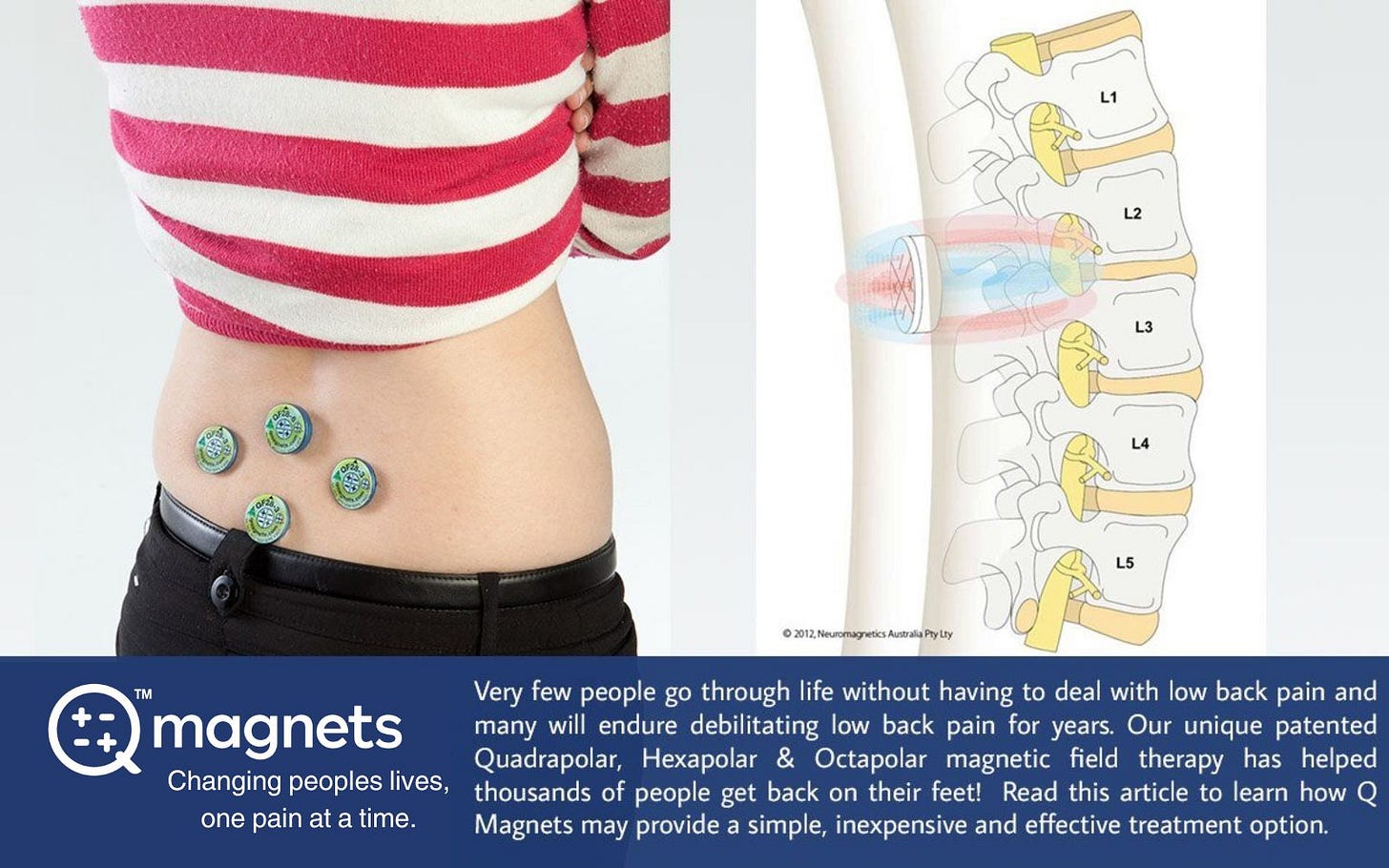Hot Off the Press: New Study Validates Static Magnetic Field Therapy for Pain Relief
Hello Everyone!
A groundbreaking study has just been published, exploring the efficacy of Static Magnetic Field (SMF) Therapy on pain intensity, functional disability, sleep quality, and depressive symptoms in patients with mechanical neck and low back pain. One of the study's authors, neurosurgeon Prof. Duran Berker Cemil from Ankara’s prestigious training and research hospital, highlights a growing trend among neurosurgeons: seeking effective non-pharmacological therapies for patients who aren’t surgical candidates.
This shift makes perfect sense. For pain rooted in inflammation or sensitization, Q Magnets are an ideal solution. Their localized, non-invasive action addresses the pain directly, offering significant benefits without the risks associated with systemic medication.
Why Q Magnets Are a Game-Changer
From a healthcare system’s perspective, Q Magnets are an exceptional investment. Often paid for by the patient, these durable devices can be used for years, making them an economical choice for managing chronic pain and common injuries that arise from time-to-time. Here’s why they’re perfect for physiotherapy and allied health practices:
Accelerated Recovery: Q Magnets can significantly reduce pain levels, allowing patients to progress to corrective exercises faster than usual.
Seamless Integration: These devices work quietly and continuously while the patient is at home or at work, bridging the gap between therapy sessions.
Focus on Strength and Education: With reduced pain, physiotherapy sessions can shift focus to muscle activation, corrective exercises and strengthening, ensuring long-term recovery. Without this, painful muscles remain in “protective mode” and fail to strengthen, no matter the exercises.
The Study in Focus
This randomized, controlled trial investigated the use of powerful neodymium magnets for mechanical neck and low back pain. The study design included an active magnet group with a placebo group, and a one-week washout period, ensuring rigorous evaluation. Results showed significant pain relief and functional improvement in patients using the active magnets.
Interestingly, the paper contrasts these findings with the 2000 Collacott study published in JAMA. That study used weaker, flexible rubber magnets on lower back pain and found no benefit over placebo. The Turkish study underscores that magnetic strength is critical for efficacy, recommending fields stronger than 400 Gauss (G) at the treatment target and application durations over 45 minutes. The weaker magnets used in the Collacott study likely failed to achieve sufficient penetration to impact deeper tissues like the spine.
Tailoring Magnetic Therapy: The Q Magnets Advantage
This research reinforces a key principle of SMF therapy: it’s not one-size-fits-all. Matching the right magnet strength and design to the condition being treated is crucial. That’s why Q Magnets offers a range of over 20 models, each with tailored treatment protocols for common conditions.
For patients and practitioners alike, this study provides strong validation for static magnetic field therapy as a reliable, effective option for pain management. To learn more or explore our products, visit Q Magnets today.
With much love & gratitude,
James Hermans and the Q Magnets Team
REFERENCES:
Gencler, O., & Cemil D. (2024). Efficacy of Static Magnetic Field Therapy on Pain Intensity, Functional Disability, Sleep Quality, and Depressive Symptoms in Patients with Mechanical Neck and Low Back Pain. (2024) 1-10. doi.
Feature Articles
Magnetic Field Therapy for Low Back Pain
Very few people go through life without having to deal with low back pain and many will endure debilitating low back pain for years. If you live with low back pain, please keep an open mind as you learn how Q Magnets may provide a simple, inexpensive and effective treatment option as it has for thousands of people.
Iliopsoas, trigger point therapy and Magnetic field therapy
Professional triathlete – Q Magnets help align hips and pelvis
At over 6 feet and with back pain, professional triathlete Lisbeth Kristensen found long spells in the time trial position would lead to severe back spasm. Problem solved with Q Magnets, read about her remarkable turn around.






